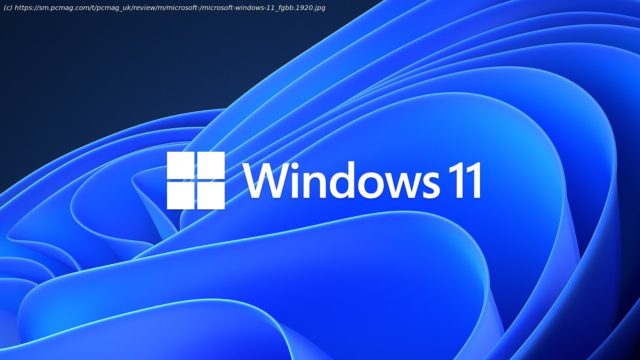More than a new look for Windows
Windows 11 ushers in the age of generative artificial intelligence (AI) on the desktop. Copilot, the company’s new AI system, assists with many tasks, from summarizing documents to writing cover letters to creating unique images. Microsoft has even added a Copilot key on the PC keyboard and markets a new line of AI Windows PCs under the Copilot+ banner. The AI updates follow in the bold new look of Windows, with its centered taskbar, rounded window corners, and translucent textures. Despite these interface changes, using Windows 11 doesn’t feel drastically different from Windows 10, and it still runs the same applications. Windows 11 is an Editors’ Choice winner for operating systems, alongside Apple’s polished macOS Sequoia. For a look at how the two big desktop OSes stack up, read our head-to-head comparison.What’s the Latest in Windows 11?
Lately, the biggest changes in Windows have come exclusively to Copilot+ PCs, which are now available in both long-battery-life Qualcomm Snapdragon CPUs and those from Intel and AMD. These NPU-equipped devices get new AI-powered features like Click to Do, Cocreator image creation in the Paint app, Recall, semantic search in OS components, and Super Resolution in the Photos app.
For all PCs, the 2024 update of Windows 11, also known as version 24H2 (2024 second half), reengineers much of the underlying kernel code for better performance and security. Rather than exciting new features, it added helpful interface tweaks, such as the ability to scroll the Quick Actions panel for more settings and a redesigned Copilot that no longer plants itself on the right side of your screen. New File Explorer and Phone Link features also appeared.
The latest versions of Windows are never the end of updates. Microsoft adds new features in what it calls «continuous innovation.» In other words, in addition to an annual big update, you get new features and changes throughout the year at no additional cost.How to Get Windows 11
Windows 11 is a free upgrade for Windows 10 systems. The new OS is an option for all PCs that meet the requirements (more on that in a moment), and new computers ship with it preloaded. Anyone with a recent CPU, though, should have no trouble installing Windows 11 via Windows Update.
Can you buy Windows 11 without updating or buying a new machine? Yes. You can buy a Windows 11 Home license ($139.99) or Windows 11 Pro edition ($199.99) from the online Microsoft Store for a DIY PC or virtual machine. To find out the differences, read our Windows 11 Home vs. Windows 11 Pro comparison. The company no longer directly sells Windows 10 licenses in its online shop.
Much has been made of the system requirements for Windows 11, but they’re very low: 1GHz CPU, 4GB RAM, and 64GB storage. A 64-bit processor is a must; there’s no longer a 32-bit version of the OS. You also need a computer with a TPM security chip and Secure Boot capability. That has been standard on most PCs for the last six or so years. The real limiter is the CPU model, which needs to be from about the last four years. The PC Health Check app is a tool that assesses your PC’s ability to run Windows 11.
Another type of CPU that runs Windows 11 is Arm64. The company has shown commitment to this lower-battery-usage, always-connected platform by producing a full set of development software for it. The recent Prism feature allows non-Arm software to run on Arm PCs, most popularly of the Qualcomm Snapdragon variety. The neural processing units, which power AI, will become very prevalent in computers, as evidenced by nearly every PC at the 2024 Computex trade show. AI is already built into Windows with the Windows ML component.
To start using the OS, you need to sign in to an online Microsoft account. This requirement raised the ire of some commenters, though I don’t think it’s an issue worth getting worked up about. You can easily switch to a local account later. If you really object to signing in with an online account for your operating system, since macOS and ChromeOS also de facto require it, may I suggest Ubuntu?
A final note about installation: If you prefer the older OS version, you can roll back to Windows 10 for 10 days after upgrading. Microsoft has announced support for Windows 10 through 2025, though individuals and corporations will be able to extend security updates for it beyond that date for a fee. Another (unofficial) option if you want to keep using the superannuated OS is to install 0Patch.Design: A New Look (and More) for Windows
Much of the work on the initial Windows 11 release went toward redesigning the interface rather than building wholly new features, so the OS is more familiar than you might expect. It borrows ideas from ChromeOS, though you can still place app icons on the desktop background, which Google’s lightweight desktop OS doesn’t allow.
Windowing and multitasking remain more advanced in Windows than in its competitors. The interface has rounded corners (like those in macOS) for all windows, which is not a significant change but does give the OS a smoother, more consistent look. Microsoft’s Fluent Design System and the system’s Mica material play large roles in the redesign. This semi-transparent look is appearing in more and more included apps and utilities.Copilot in Windows
Microsoft Copilot is an optional AI tool that has become increasingly humanlike. In the 24H2 version of Windows, you access it and resize its window just as you would any other Windows app. You give Copilot prompts or commands by typing in a chat box or clicking a microphone icon and speaking. The updated app now carries on remarkably natural conversions in one of six humanistic-sounding AI voices. A Quick View option displays a smaller always-on-top Copilot window.
Plug-in support is gone from the latest incarnation of Copilot, though similar agents will be coming, and other new tools are arriving at a good clip. Copilot Vision, for example, conversationally provides information about webpages you visit in the Edge web browser. The Think Deeper option, which uses more advanced AI models to delve into topics, is now free for all Copilot users.
The Microsoft Copilot Labs blog says Think Deeper can «help with anything from solving tough math problems to weighing up the costs of managing home projects.» It also notes that the feature «can take more time before responding, allowing Copilot to deliver detailed, step-by-step answers to challenging questions.»
Strangely enough, Copilot+ has little to do with Copilot itself; it’s instead a set of locally processed and unique AI features that some newer PCs offer. Among them are Cocreator image generation, Live Caption translation, Studio Effects for video calls (like background blur and live filters), and the aforementioned Recall feature, which lets you search for recent actions on your computer via a timeline.Start Menu and Taskbar
The Start menu gets a complete overhaul. Pinned app buttons (larger than icons but smaller than Windows 10 tiles) are at the top of its panel. The Recommended section below them doesn’t work well for me. I prefer simple Recently Added and Most Used sections like those in Windows 10. The Start menu’s icons are adequate for touch input, but they’re smaller, and you lose the info that Windows 10’s live tiles offer, as annoying as some users find those to be.
Another quibble I have with the Start menu is that it’s harder to get to the All Apps view than in Windows 10. With that version of Windows, you can see all installed apps as soon as you open the Start menu; they’re in a list on the left, while tiles for your pinned apps are on the right. You can now group pinned app icons into folders and change the portion of Pinned vs. Recommended icons that appear in the Start menu. News is out, however, of changes coming to the Start menu: You will be able to see every app by scrolling down, and a side panel for your smartphone can accompany the main Start menu to its right.
For decades, the Windows Start button lived in the lower-left-hand corner. Getting used to it being in the center instead could be one of the bigger adjustments you need to make in Windows 11. The issue for me is that, until now, the Start menu has always been in the exact same place. Now, if you run more programs, it moves a bit more to the left. Not having to think at all about the Start button’s position was a plus in Windows versions going back more than 20 years. Happily, a taskbar alignment option in Settings lets you move the Start button back to its rightful position in the left corner.
I wasn’t crazy about the new taskbar in Windows 11’s initial release, but subsequent updates have rectified my issues with it. You can choose to have the taskbar buttons wider by selecting the Never Combine option in Settings. In Windows 11, you can still hover over the buttons to see a thumbnail of the app window and right-click to view the Jump List, which shows recent documents or other common actions for the app.File Explorer
File Explorer is a good example of Windows 11’s new look, particularly its left panel controls and colorful folder icons. Note the simplified ribbon along the top, which is far less busy and distracting than Windows 10’s File Explorer. It also now has tabs, so you can use several pages in one window. The Gallery view shows recent photos you’ve added, no matter where they reside on the disk. Finally, the system can handle 7-Zip and RAR files without the need for third-party software.
File Explorer’s New button at the top left works for new folders or documents supported by your apps, and the same viewing options (list, details, differently sized icons) for files are available. The overflow menu has file compression, selection, and Properties options, as well as the old Folder Options dialog. The right-click context menus get a small update for version 24H2: They now show text in addition to the icons for copy, paste, and so on across the top. The context menus, in general, are clearer, shorter, and smarter in Windows 11. They show only the most often-needed options, but you can tap «Show more options» to see the extra menu items that installed programs add.
If you want still more functionality out of your file manager, you always have the option of using one of several File Explorer Alternatives. But you no longer need one of those to use tabs. And if you’re on a Copilot+ PC, you now have natural-language semantic search in File Explorer, meaning you can type something descriptive rather than exact.Windows Search
The search function started life in Windows 11 as a mere button, but it can once again display as a real entry box that you type in.





